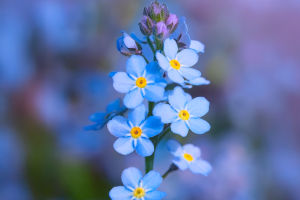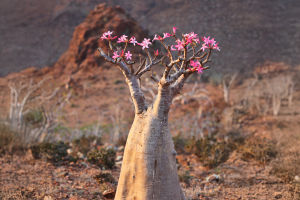Botanical gardens have long been a cornerstone of plant conservation, research, and education.
From their beginnings as private collections of exotic plants to their modern-day roles as centers for scientific discovery and environmental preservation, botanical gardens have played a crucial part in shaping our understanding of the natural world.
Have you ever wandered through a botanical garden and wondered how these beautiful spaces came to be? Let's take a look at the fascinating history behind these green oases and their incredible journey through time.
1. The Origins of Botanical Gardens
The story of botanical gardens begins thousands of years ago in ancient civilizations. The first recorded botanical gardens appeared in the ancient civilizations of Mesopotamia and Egypt. In these early gardens, plants were cultivated for both medicinal and aesthetic purposes. Ancient Egyptians, for example, were known for their herb gardens, which they used to grow plants for spiritual rituals and for medicinal purposes.
However, it wasn't until the rise of ancient Greece and Rome that the concept of the botanical garden truly began to take shape. The Greek philosopher Theophrastus, often called the "father of botany," was one of the first to systematically study plants and document their uses. Around 300 BCE, Aristotle founded a school in Athens where plants were studied for their medicinal and philosophical significance, creating one of the earliest known botanical collections.
2. The Birth of the Modern Botanical Garden
Fast forward to the Renaissance, and botanical gardens began to emerge as important institutions in Europe. In 1545, the first modern botanical garden was established in Pisa, Italy, marking a new era in the history of plant science. These gardens were initially created for medicinal research, with the primary goal of growing plants for use in pharmacies.
The idea of creating gardens for both study and public enjoyment spread quickly across Europe. In 1565, the Orto Botanico di Padova in Italy became the first botanical garden to be open to the public. As scientific curiosity about plants grew, botanical gardens began to serve as vital spaces for research, where scholars could observe, classify, and study plants from around the world.
3. The Role of Botanical Gardens in Exploration and Trade
During the Age of Exploration in the 17th and 18th centuries, European countries began sending expeditions to distant lands in search of exotic plants. Botanical gardens played a crucial role in the exploration and trade of plants from around the globe. Collectors and botanists began bringing back new species of plants from Africa, Asia, and the Americas, expanding the diversity of plants grown in European gardens.
For example, the Royal Botanic Gardens in Kew, England, founded in 1759, became a key center for the exchange of plant species. Kew Gardens played an instrumental role in the introduction of plants like rubber trees, coffee, and tea to the British Empire. It also helped establish many botanical gardens in other parts of the world, acting as a hub for plant research and cultivation.
4. The Scientific Revolution and Botanical Gardens
In the 18th and 19th centuries, botanical gardens became an essential part of the scientific revolution. With the advent of new technologies like microscopes and more advanced methods of plant classification, scientists and botanists were able to study plants in greater detail than ever before. Botanical gardens became places of education and research, where scholars could share knowledge and collaborate on understanding the plant kingdom.
One of the most notable figures in this period was Carl Linnaeus, the Swedish botanist who developed the binomial nomenclature system for naming species. Linnaeus' work revolutionized the study of plants and influenced the way botanical gardens organized their collections. His classification system helped standardize plant names, making it easier for botanists to identify and study plants across different regions.
5. The Role of Botanical Gardens Today
Today, botanical gardens have evolved into vital centers for plant conservation, education, and environmental awareness. As the world faces challenges like climate change, habitat loss, and biodiversity decline, botanical gardens are at the forefront of efforts to protect and conserve plant species.
Botanical gardens now focus on preserving endangered plants, restoring natural habitats, and educating the public about the importance of plant diversity. Many gardens collaborate with universities, research institutions, and conservation organizations to conduct research and promote sustainable practices. They also offer educational programs for visitors of all ages, helping to foster a deeper connection with the natural world.
6. The Future of Botanical Gardens
The future of botanical gardens is promising, as they continue to adapt to the changing needs of society. With the rise of urban gardening, sustainability, and climate awareness, botanical gardens are becoming increasingly important in promoting green spaces within cities. They offer urban dwellers a peaceful retreat from the hustle and bustle, while also serving as important hubs for environmental education.
Furthermore, as climate change threatens global biodiversity, botanical gardens are likely to play an even greater role in plant conservation. By preserving plant species from around the world and sharing their knowledge, these gardens will help ensure that future generations can experience the beauty and importance of plant life.
Conclusion: A Legacy of Green Wonders
Botanical gardens have a rich history that spans centuries, and they continue to play an essential role in the conservation and study of plants. From their humble beginnings as private collections to their current status as world-renowned institutions for research and public enjoyment, botanical gardens have provided us with a deeper understanding of the natural world. As we look to the future, these gardens will remain vital to preserving the planet's plant diversity and fostering a greater appreciation for the environment.
So, next time you visit a botanical garden, remember that you're stepping into a space with a rich history and a promising future. These green sanctuaries are not just beautiful—they are living legacies of humanity's long-standing relationship with nature.
Do you have a favorite botanical garden? Share your thoughts with us!


